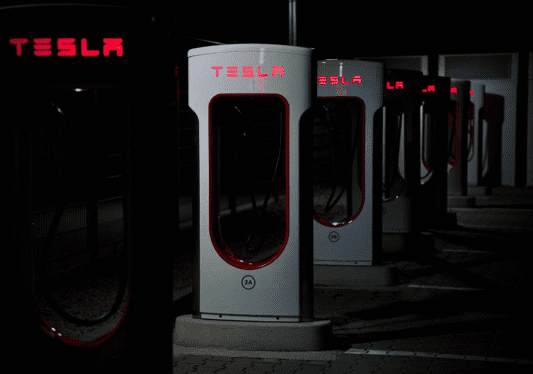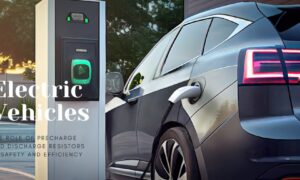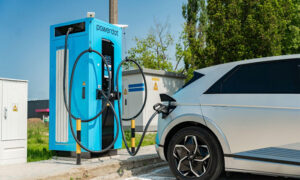Meet Andrii Boiko, a software engineer and tech enthusiast at the forefront of the rapidly growing industry of building massive EV charging networks worldwide. With his expertise in charging station network management software, Andrii is currently leading the development and deployment of AEV Charging Inc.’s infrastructure management program, helping expand EV charging across the U.S. and beyond. His platform, EV Admin, makes charging easier for millions of users across the U.S. by providing a reliable system to manage both entire charging networks and individual connectors. Andrii’s software solutions are also actively supporting charging infrastructure growth in Georgia, Armenia, and Ukraine. With hands-on experience in everything from software management to the physical assembly and design of charging stations, Andrii is one of the rare specialists who can bridge the gap between capital-intensive industries, energy, and tech.
Hi Andrii, can you provide us with insights on the current state of public electric charging networks in the US? Who are the key players leading the industry?
Well, currently the leaders in this space include Tesla with roughly 2500+ supercharger locations, EVgo with 900+ locations followed by Electrify America, ChargePoint. These are the largest players focusing primarily on fast charging public networks. It is worth noting that there are other companies in the market with slightly different business models such as Volta, Blink and many more. That being said, the market is still open for new players and innovative business models as overall electric vehicle penetration is below 20%.
What are the major trends you anticipate shaping the industry in the upcoming years?
In terms of trends, one big one is the growing adoption of fast charging technology. This means that EV owners can quickly charge their vehicles in just a few minutes, which is especially important for long distance travel. Another trend is the expansion of charging networks into rural and underserved areas. This is really important to make sure that everyone has access to charging infrastructure, no matter where they live. So companies are working to expand their networks into areas that may have been underserved in the past, such as rural communities and low-income areas.
There’s also a push towards integrating renewable energy sources into electric charging networks. This includes things like using solar panels to power charging stations and developing smart charging systems as well as battery storage technology that can optimize charging times based on the availability of renewable energy. All in all, the electric charging network industry is rapidly evolving and changing, with new technologies and players emerging all the time. As more people switch to electric vehicles, the need for reliable charging infrastructure will continue to grow, making this an exciting industry to watch in the coming years.
Could you share some insights on why renewable energy and battery storage are becoming increasingly important for the deployment of EV infrastructure?
Certainly! Renewable energy and battery storage are becoming increasingly important for the deployment of EV infrastructure for a few reasons. Firstly, electric vehicles are seen as a key component in transitioning to a low-carbon economy and reducing greenhouse gas emissions. However, if the electricity used to power these vehicles is generated from fossil fuels, the environmental benefits of electric vehicles are significantly reduced. This is where renewable energy comes in. By using renewable energy sources to generate the electricity needed to power electric vehicles, we can significantly reduce our reliance on fossil fuels and decrease our carbon footprint.
Battery storage is also important because it helps to smooth out the intermittent nature of renewable energy sources, ensuring a more reliable and consistent energy supply. Additionally, battery storage can provide a more stable and reliable source of power for EV charging stations, allowing them to operate during power outages or disruptions to the electrical grid. It also can reduce strain on the electrical grid during periods of high demand for electricity, which helps avoid the need for expensive upgrades. The energy stored during peak demand times can help charging station operators avoid higher electricity rates, thus reducing the overall cost of EV infrastructure deployment.
So there’s a financial incentive in utilizing renewable energy and battery storage as well?
Yes, there are financial incentives for utilizing renewable energy and battery storage in EV charging infrastructure deployment. Many states and localities offer incentives and rebates for the installation of renewable energy and battery storage systems, which can help offset the upfront costs of these systems. Additionally, using renewable energy sources can help reduce electricity costs over time, as renewable energy tends to be cheaper than traditional fossil fuel-based energy sources. Finally, battery storage can help reduce the overall operating costs of EV charging stations by allowing operators to avoid higher electricity rates charged during peak demand times. All of these factors can make utilizing renewable energy and battery storage a financially attractive option for EV charging infrastructure deployment.
Do you think “The Biden-Harris Electric Vehicle Charging Action Plan” would help with the industry and propel overall adoptions of electric vehicles?
Yes, I believe that “The Biden-Harris Electric Vehicle Charging Action Plan” has the potential to significantly help the industry and propel the overall adoption of electric vehicles. The plan proposes to invest $15 billion to build a national network of 500,000 electric vehicle charging stations by 2030, which would greatly increase the availability of charging infrastructure for electric vehicle owners.
This increased charging infrastructure would help address one of the main concerns that potential electric vehicle buyers have, which is the availability of charging stations for long distance travel. With a robust charging network in place, consumers would be more likely to consider electric vehicles as a viable alternative to gas-powered vehicles.
Additionally, the plan includes a focus on equity and making sure that charging infrastructure is deployed in underserved and rural communities. This would help address another concern that potential buyers have, which is the lack of charging infrastructure in certain areas.
Overall, I believe that the Biden-Harris Electric Vehicle Charging Action Plan has the potential to greatly benefit the industry and accelerate the adoption of electric vehicles.
Thanks for your insights, Andrii! I’d love to learn more about your current project and the impact you’re hoping to achieve. Could you share some details about what you’re working on and how you’re hoping to make a difference?
Right now, I’m leading the rollout of the software infrastructure for managing AEV Charging Inc.’s charging station networks. AEV Charging is a platform that brings together top EV charger manufacturers and local installers to help people access all-in-one solutions that are cost-effective and optimized for available incentives and rebates based on their location.
It’s no secret that EV adoption is expected to hit 15% nationwide by 2030, and with over 85% of charging happening at home, we see a massive market for home charging installations. Please visit aevcharging.com to learn more.



































